Today’s leaders and managers are often intensely interested in operational efficiency and workflow automation to improve profit margins and create a more effective business. However, understanding current performance is essential to determine where efficiency gains can be made.
A time study — specifically a time study template is an invaluable tool to start quickly. Time study templates provide a framework for recording data and therefore ensuring consistency across an entire set of studies.
This article will share how a time study template can help save time, reduce errors, and record data effectively. We’ll even share a powerful template on monday.com to level up time study undertakings.
What is a time study template?
Time studies are used to identify areas of inefficiency in workflows — often in the context of goods production — and to make efforts toward reducing those inefficiencies.
Time studies are all about collecting data. Therefore, a method of recording that data is critical. That’s where the time study template comes in.
A time study template is a customizable document — meaning you can edit it either for an individual study or customize the template itself to suit your ongoing needs — that leaders use to record the amounts of time spent on various tasks in a production workflow.
Time study templates generally include fields for:
- the name of the area of interest (for example, product packaging workflow)
- the individual activities being tracked
- activity start and finish times
- time in minutes or seconds for each activity, with multiple spaces to capture several data points
- totals
- notes
- names of any employees responsible for specific tasks
Why use a time study template?
Simply put, a time study template saves time.
For example, say a production manager is conducting a time study. Their goal is to improve workflow efficiencies — opportunities to save time. Spending half an hour setting up a worksheet to capture data every time a time study is necessary doesn’t make much sense.
When you use a time study template, you can simply open up the document, save a new copy — keeping the original intact for future use — and track the activities you want to study.
Reducing human error is another benefit of a template. When using a pre-designed template, there’s less opportunity to miss out on important information, such as the names of employees responsible for various tasks. Templates can also double as a source of inspiration for designing a time study, which can be especially helpful for anyone who hasn’t run one before.
Bonus: Apply learnings from the various studies to the time study template. Next time around, your template is that much more dialed in.
What are some examples of time study templates?
Here are three examples of commonly-used time study templates.
1. Time and motion study template
Some managers conducting time studies prefer to include a motion element, known as a time and motion study. This study analyzes workers’ movements while completing a job to identify areas where physical movements are inefficient or wasteful.
This template is built on a simple spreadsheet and allows users to track start and end times for each activity and take any required notes in the Description field.
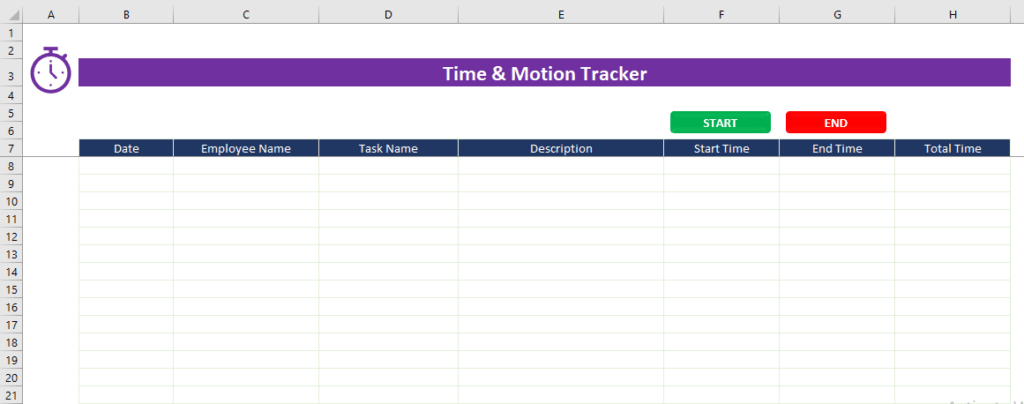
2. Business time study template
This time study template is more in-depth – great for businesses that want to conduct time studies across multiple days. Notice how there is an opportunity to capture a total time for each activity for each day of the week. This allows managers to determine if employees are more efficient on certain days and then analyze those results further to understand why.
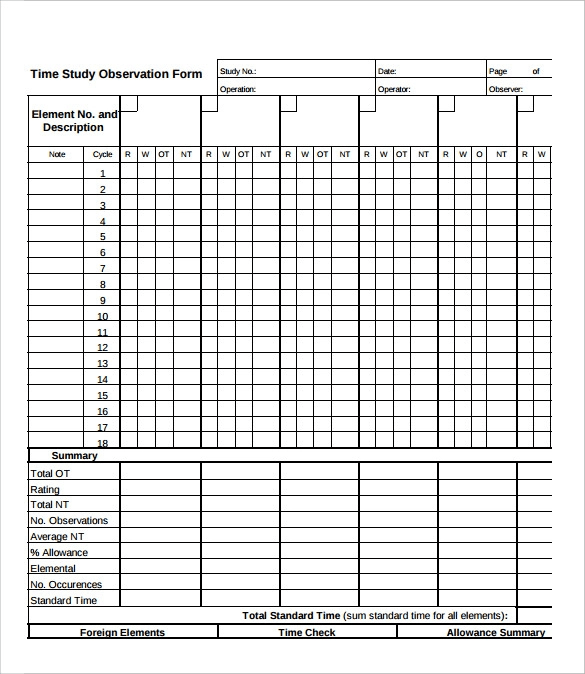
3. Personal time study template
While time studies are most commonly used to identify business inefficiencies, they can also benefit personal life. First, use this time study template to understand how much time is spent on particular tasks and take notes in the right-hand column for any helpful thoughts or insights while tracking. Then, review the time study after a few weeks, and look for areas where there are opportunities for more efficiencies.
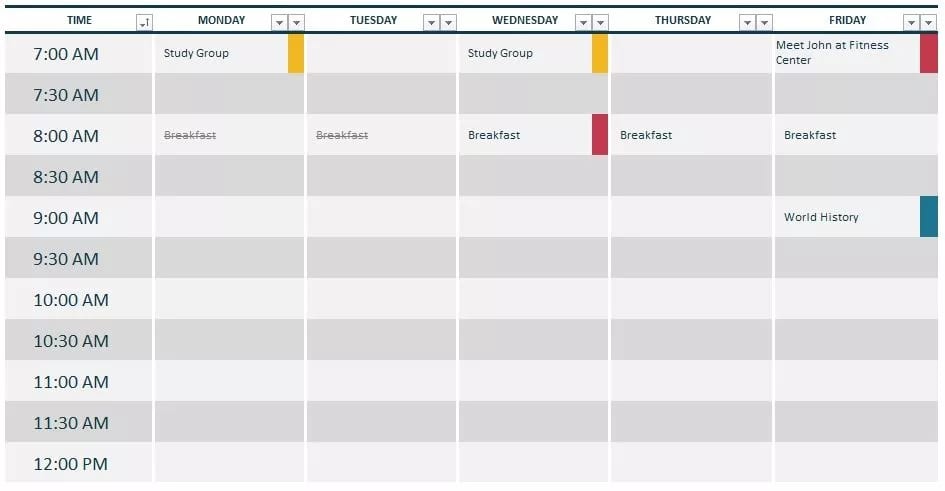
monday.com’s time study template
Notice anything similar about the time study template examples discussed above?
They are all static, disconnected worksheets. That might be fine for conducting the time study in isolation, but it inevitably means data is disconnected. Even worse, any data analysis will be entirely manual.
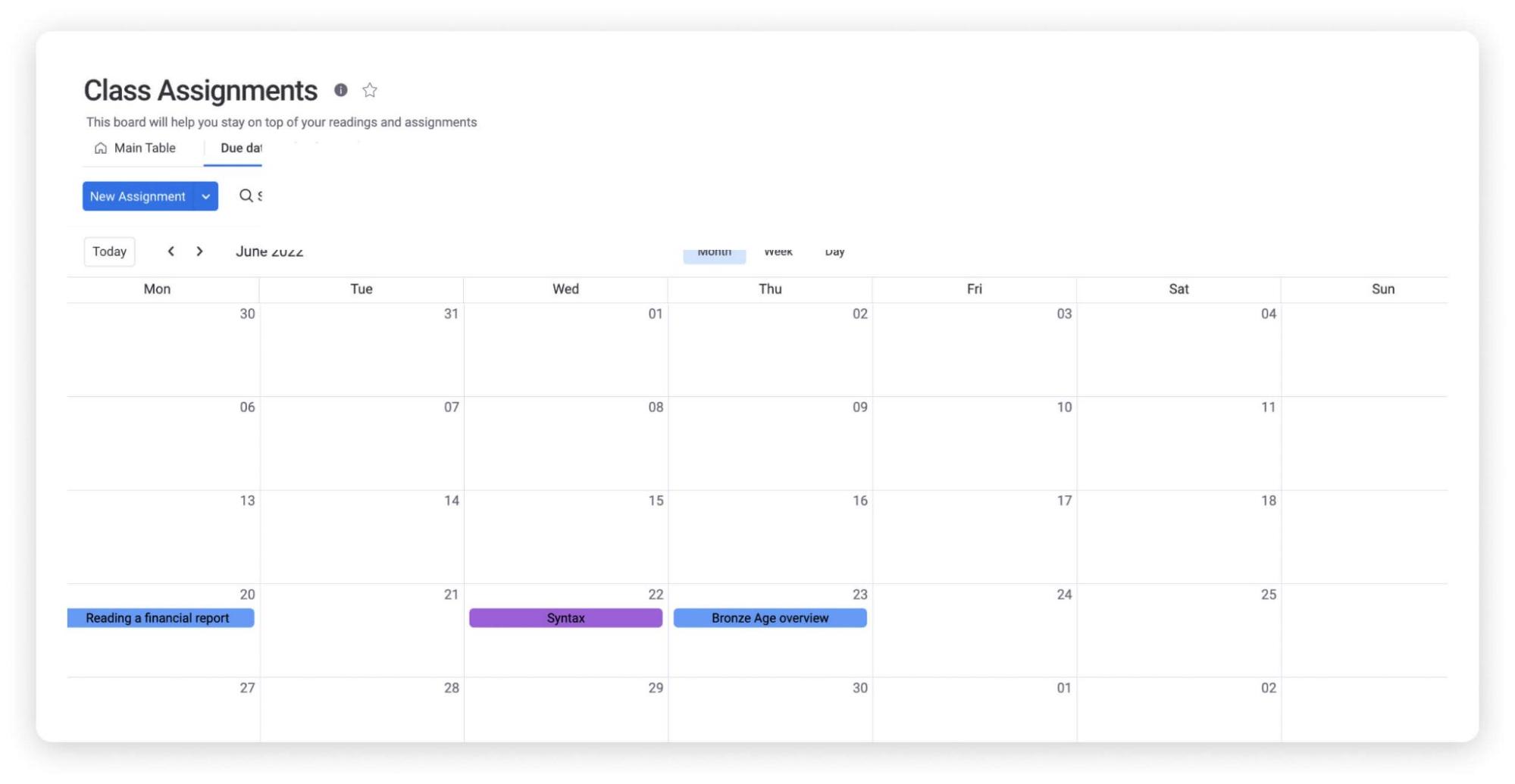
Our customizable time study template, built on the monday.com Work OS, is one we think you’ll love. Here’s why:
1. Built-in time-tracking column
Leave that old stopwatch in the drawer! The monday.com time study template has a digital time tracking feature to start and stop with a single mouse click, storing time data automatically.
![]()
2. Smarter data
Everything is connected in the monday.com Work OS. That means it’s easy to connect the time study template to the workflow management board already in use and start tracking time spent right away.
Want to get super-nerdy? Set the time study up to monitor performance continuously — a vast data set to dig into when it comes time to analyze any inefficiencies.
3. Powerful reporting
Thought there was a need to analyze the time study data manually? Nope.
The monday.com Work OS has an advanced reporting and analytics suite to collate the data across time studies and share important information. Plus, a custom dashboard can be generated with the essential reports … view performance at a glance.
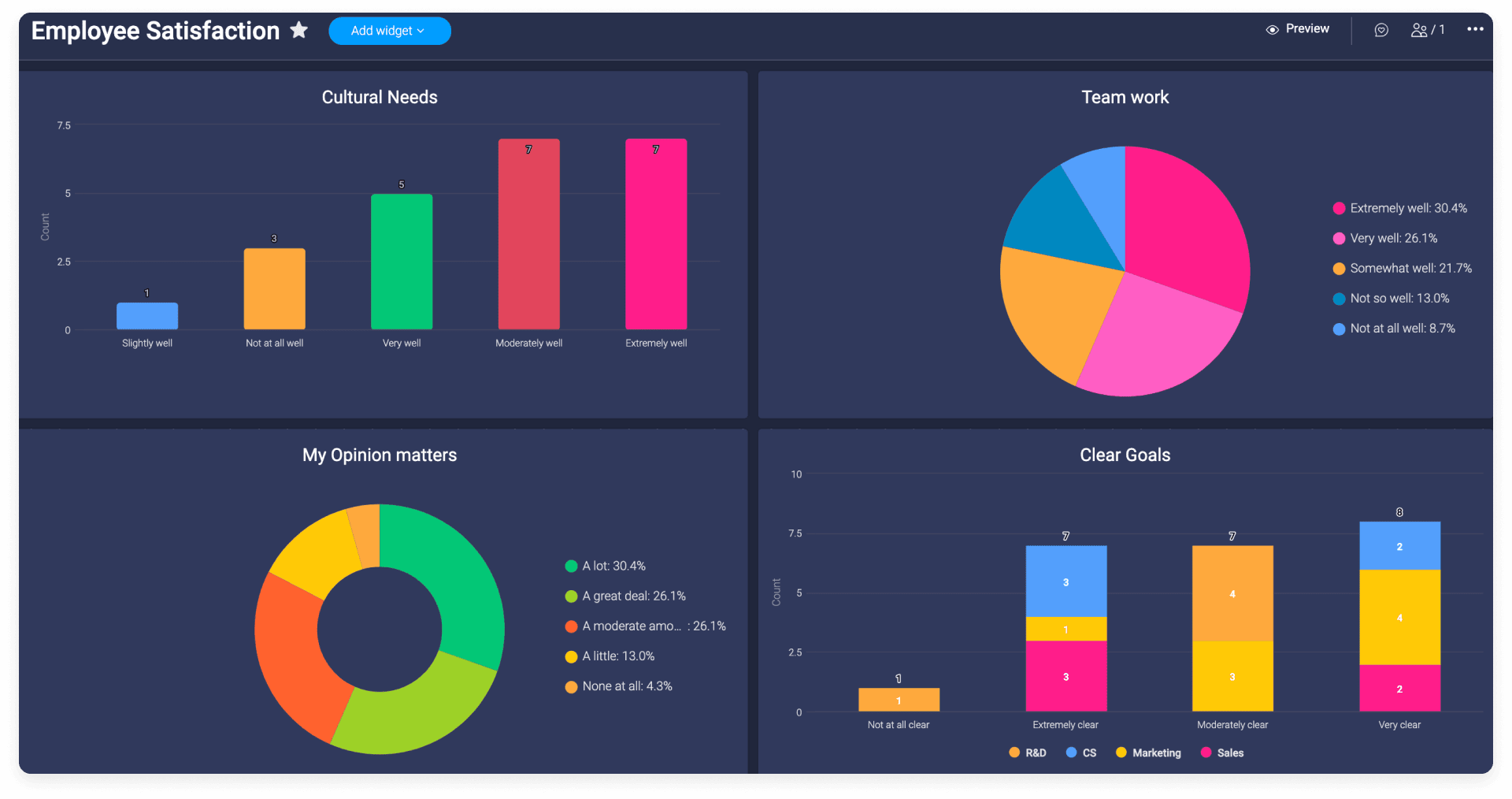
How to conduct a time study
Want to conduct a time study? Follow these simple steps:
1. Determine what problems need to be solved
Determine what needs fixing. Reduce waste by 10%? Increase output by 20%? Determine the issue before launching a study, and all efforts will be much more intentional.
2. Define the necessary work elements
Goal. Check. Now it’s time to break down that workflow into individual actions and elements. Again, this will likely require a period of observation and notetaking.
3. Choose a suitable time to conduct the study
Choose a time of the day and/or week when the study will be conducted — minimal to no disruption to regular operations is ideal.
4. Prepare a time study template
Get prepared for the time study by downloading the appropriate template and filling in the relevant fields.
5. Capture more data than you require
Time studies should be completed over numerous workflow iterations to ensure no anomalies.
Consider throwing out the first few days of results as observing the workflow can influence employee behavior. However, his effect usually subsides after a few days of monitoring, so keep tracking and ignore the first few observations.
FAQs about time study templates
How do you document a time study?
The best way to document a time study is to use a time study template. They include fields for all the information you need to capture — such as activity start and end times and a section for notes — and ensure consistency and accuracy.How do you create a time study in Excel?
In the Excel spreadsheet, create columns with the following headers:
- Time study name
- Activities
- Activity start time
- Activity end time
- Period of time elapsed
- Employee responsible for activity
How do you do a time & motion study?
The basic steps to perform a time & motion study are:
- Prepare the template or document for capturing data
- Determine which activities will be used to track cycle times
- Choose an appropriate time slot to conduct the study
- Run tests over multiple periods of time to obtain average results
- Complete a detailed analysis of observed times and make changes to increase efficiency
- Rerun the study to see if changes have had a positive impact
- Rinse and repeat
How should a time study sheet be filled out?
The basic elements to include in the time study sheet are the tracked activities and the time elapsed for each activity.
For a more comprehensive breakdown of how to conduct a time study, click here.

